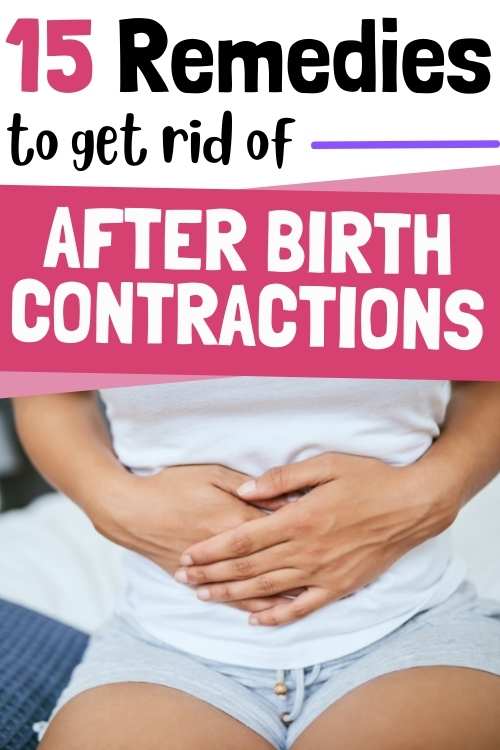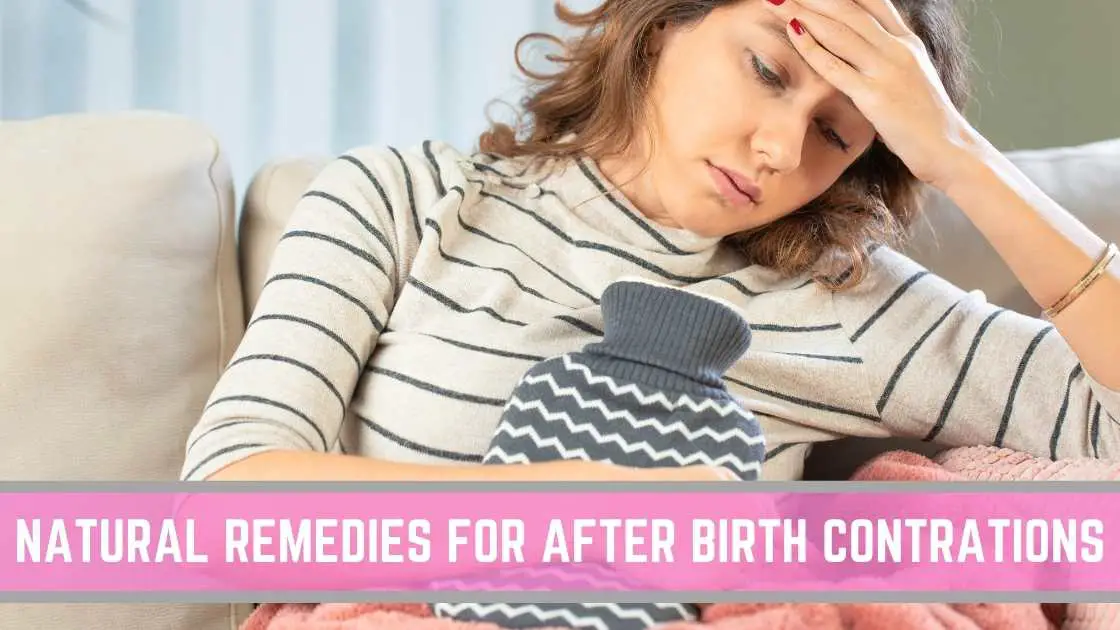Feeling cramps after having a baby? This can be normal! After birth contractions are part of the labor and delivery process, and they help your uterus to recover.
However, there are many natural remedies you can try to help relieve any pain, and I am going to take you through them all here.
Related: Postpartum Care Kit Checklist (with all Essentials!)
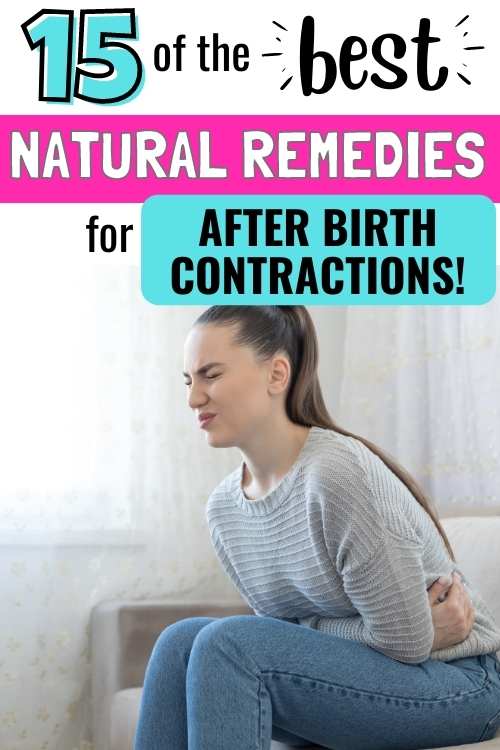
What Are Postpartum Contractions?
“After Pains” are the postpartum contractions that help your uterus shrink back down to it’s original size after having a baby. These postpartum contractions feel different for each women, ranging from mild menstrual aches, to significant and dis-comfortable cramping.
It is common to experience greater after birth pains if you have already had a baby. Breastfeeding can also bring on postpartum cramping or make it more intense.
That is because breastfeeding naturally triggers the release of oxytocin in your body to aid in the release of breast milk. However, oxytocin also stimulates the uterine muscles to contract. Pumping also stimulates the nipples and can trigger uterine cramping.
How Long After Birth Do Contractions Last?
It took your uterus 9 months to grow to almost 500 times its original size, but don’t worry! Postpartum contractions should only last a few days, and the pain gradually eases each day.
What Can I Do To Relieve After Birth Pains?
Although for some women postpartum contractions can be painful, they are a normal part of giving birth!
Some health care providers recommend mothers take an over the counter medication to help relieve pain. However, some women might be interested in easing the pain naturally, especially after having conquered an unmedicated birth!
There are lots of options you can try at home, most of which require objects you may already have. Make sure to talk to your healthcare provider about what methods you decide to try.
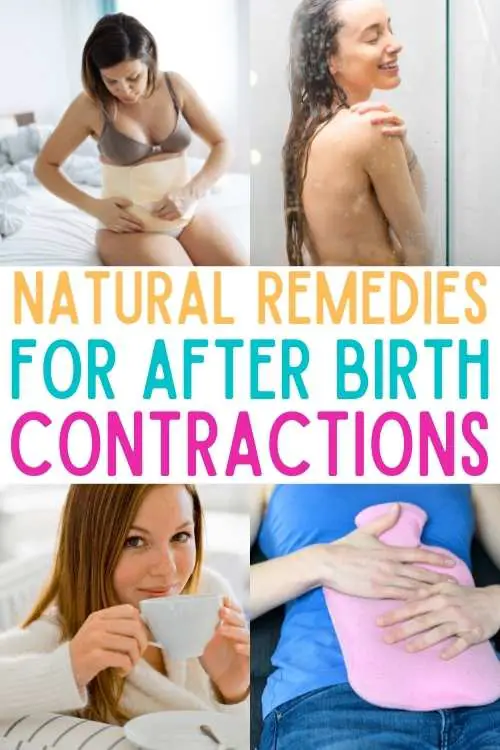
15 Ways To Ease After Birth Pains Naturally
Using Heat to Soothe Postpartum Contractions
First of all, using gentle heat is an essential way to sooth postpartum contractions. Similar to treating menstrual cramps, you can use of a heat source wrapped in a cloth and applied as needed to wherever you feel aches.
1. Heating Pad
Heating pads work well because the warmth is constant and controllable. You can wrap the pad around your abdomen, or roll it up to target just the lower belly spot.
Remember to set the heating pad on “low” or wrap it in a towel. If you don’t have an electric heating pad, you can make a warm compress for similar results by soaking a small towel in warm water and wringing it out.
2. Rice Sock
Using a rice sock for postpartum cramps is a great way to provide heat without worrying about the cords from an electric heating pad. Rice socks are easy to make at home, inexpensive, and also provide gentle pressure on your stomach. Some women like to add a bit of lavender essential oil to their rice before tying the sock.
To make a rice sock, fill a long tube sock ¾ full with uncooked plain rice. Tie the end of the sock into a knot. Heat the sock in the microwave in 10-second intervals until it is warm.
3. Hot Water Bottle
A very quick DIY heating “pad” can be made from a water bottle! Fill up a water bottle with warm water and close the lid tightly, then hold it against your abdomen or wherever you need relief.
Make sure to wrap the water bottle in a thin cloth or towel or hold it against your shirt so that you don’t burn your skin.
4. Massage Stones
Heated massage stones are a less common but effective way to add warmth and pressure to relieve after birth pains! They can be heated with water in a crockpot or pot, and applied to aching areas as needed.
As an added bonus you can lay on your back and let the gentle weight of the stone press against your uterus.
5. Warm Shower
Hop into the shower and take advantage of the warm water on your stomach. If you have a detachable shower head, aiming the spray at your lower belly feels amazing!
Using Pressure to Treat Postpartum Contractions
Gently pressing on your uterus with your hands or providing pressure through another method below also helps to counteract any aching or cramping you feel during postpartum contractions.
6. Lying On your Stomach
While resting or sleeping, try lying face down! You can even roll up a small towel, use a pillow, or use a rice sock underneath your abdomen to add extra pressure.
If your milk comes in and lying face down doesn’t feel comfortable, you can try leaning over the back of a couch to avoid putting pressure on your breasts.
7. Belly Binding
Some moms have found that using a postpartum belly wrap, or a traditional belly binding technique such as Bengkung binding helps relieve postpartum contractions.
Belly binding supports the uterus and abdominal muscles and provides counter pressure during afterbirth pains!
8. Gentle Massage
Not to be confused with a Fundal Massage, gently massaging your own belly can both stimulate contractions as well as soothe them. The key is to add a bit of pressure and massage soreness, but not press hard enough to cause pain.
Relaxation Methods For After Birth Pains
Using relaxation techniques to focus your mind and breathing is not only helpful during labor, but also during postpartum cramping.
9. Deep Breathing
Although postpartum contractions are usually not as strong as true contractions, they might still make you pause for a breath. You can use the same breathing techniques you learned to use in labor for afterbirth pains too.
Concentrating on calmness and using a mantra or affirmation can help as well.
10. Emptying Your Bladder
Sometimes after a vaginal birth there can be a decrease in the sensations in your pelvic area, which makes it hard to tell if you need to go to the bathroom. Remembering to urinate frequently is important, and can also help relieve postpartum contraction pains.
Having a full bladder can stimulate the uterus to contract, so empty it often to ease cramping.
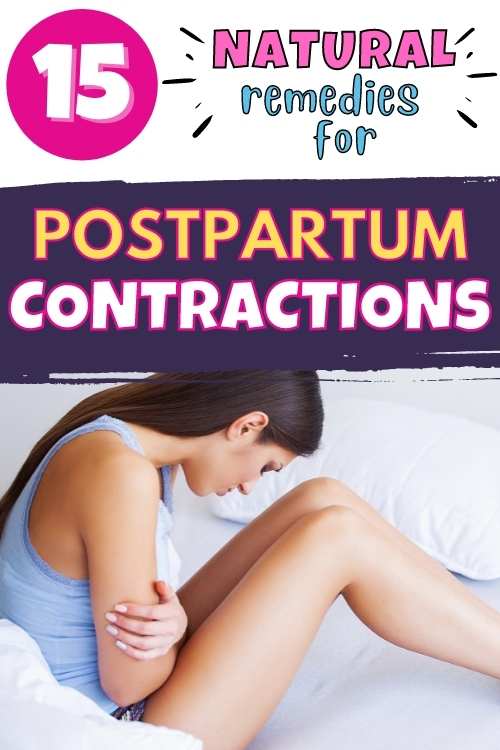
11. Changing Positions
It is important to rest after having a baby, but gentle movement or simply adjusting your position in bed can help ease afterbirth contraction pain.
Try switching between lying on your side, stomach, or back to see which feels better. You can also experiment with being propped up with pillows to give your body a new position while resting.
12. TENS Machine
TENS (transcutaneous electrical nerve stimulation) is a portable handheld device that works by placing small electrodes on your body and sending mild electrical pulses through your skin.
The use of a TENS machine during labor is becoming more common and seems to help women manage pain during labor. TENS is also an effective method for treating menstrual cramps in some women.
This non-invasive, non-drug method of pain relief can also be useful in treating postpartum contraction pain. Ask your doctor or midwife about how to find a high quality TENS unit.
Easing Afterbirth Pains With Herbs
For those interested in treating afterbirth pains naturally, no list would be complete without discussing some herbal options! Herbs have been used in traditional medicine to treat a variety of pregnancy and birth pains, including afterbirth pains.
Because some herbs can interfere with pregnancy and breastfeeding, herbs should only be used under the supervision of a knowledgeable healthcare provider.
13. After Ease Tincture
After Ease tincture is an herbal preparation some midwives recommend that includes Crampbark, Black Haw bark, Yarrow, Motherwort, and other ingredients. It is said to support and soothe the body after birth.
Many mothers have reported that the use of this tincture helped relieve their postpartum pains or made them more tolerable.
14. Red Raspberry Leaf Tea
Red Raspberry Leaf Tea has traditionally been used during pregnancy to strengthen and tone the uterus, as well as assist in making contractions more effective. It has also been used to relieve cramping and make postpartum contractions more manageable.
Not to mention it can increase your milk production if you are experiencing a drop in supply. Definitely one to have in your postpartum care kit.
15. Lavender and Clary Sage
Lavender and Clary sage are two essential oils that some midwives and naturopathic doctors recommend to women to ease after birth pains.
Clary Sage (sometimes called a uterotonic) is thought to stimulate and regulate uterine contractions by making them more effective. Clary sage is also used by women to regulate hormones and emotions.
Lavender is commonly used for its soothing and calming properties, as well as it’s ability to promote relaxation as well as contractions.
Clary Sage and Lavender essential oils should be used with care around infants though, and topical application to the abdomen with proper dilution is recommended.
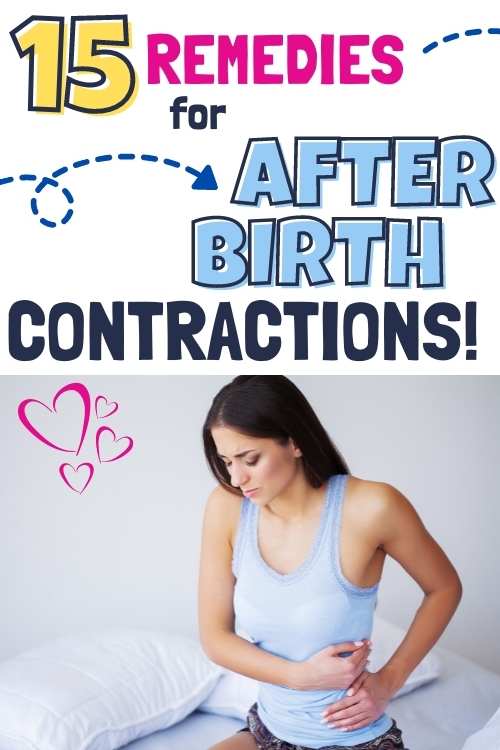
Natural Remedies to Ease After Birth Contractions: Final Thoughts
When preparing for the postpartum period, dealing with postpartum contractions might be the last thing on your mind! Some women don’t experience them until they have had their second or third baby, and some women find them mild.
But for mothers who want to ease their afterbirth pains naturally, there are so many remedies to try that are inexpensive, natural, and drug free.
From heat sources to massage, relaxation, and herbs, there is a method for every mom that makes easing after birth contractions easy and manageable. Which of these 15 Natural Remedies For After Birth Contractions interests you? Let us know in the comments below!
For more information and tips on how to survive the first few weeks postpartum:
- Signs of Postpartum Anxiety and Tips on How to Deal with it
- Postpartum Care Kit Checklist (with all Essentials!)
- Colic Symptoms & Remedies for Breastfed Babies
- 8 Tips for New Parents to Avoid Sleep Deprivation
- 18 Tips on How to Soothe a Crying Baby
- 6 Tips For First Time Moms (Practical Advice To Help New Moms Adjust)
- How to Stay on Top of Chores Postpartum
About the Author
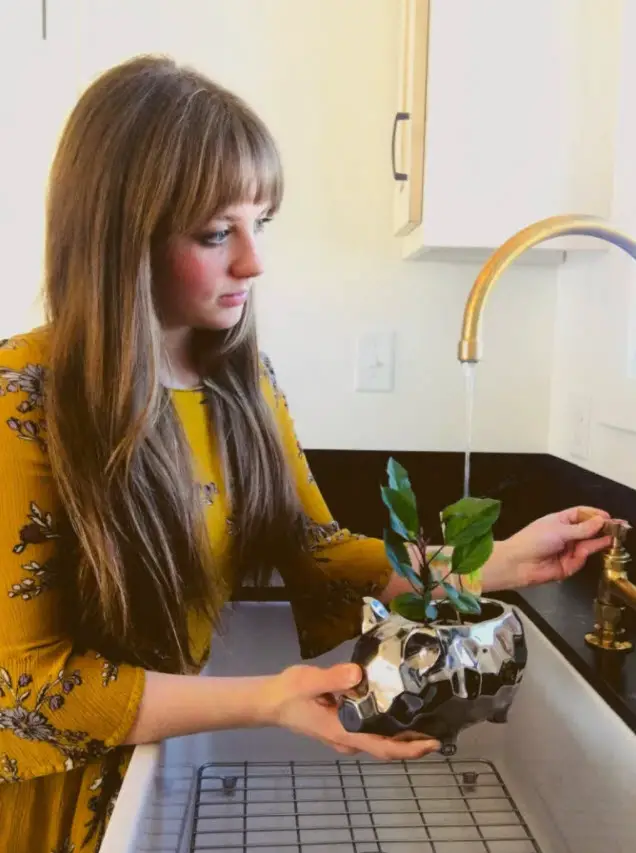
Rachel is a wife, blogger and young mom of 3 kids. She writes about cloth diapering, home birth, and homemaking on her blog ApproachingHome.com
Did you find this useful? Pin it!
